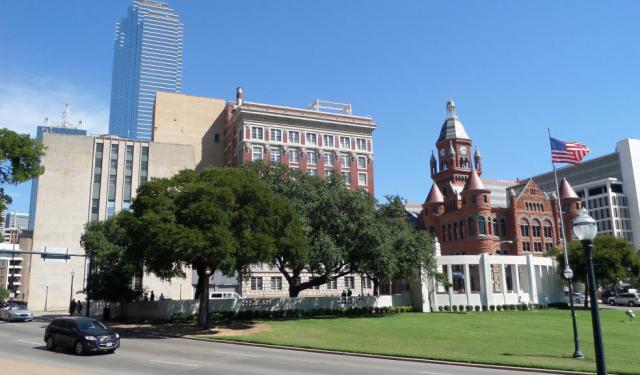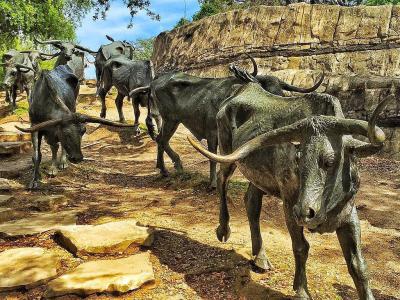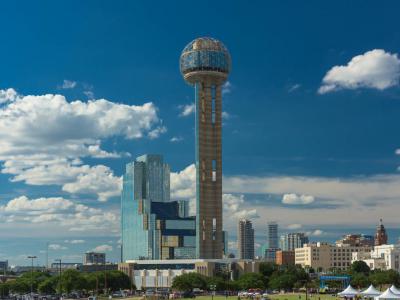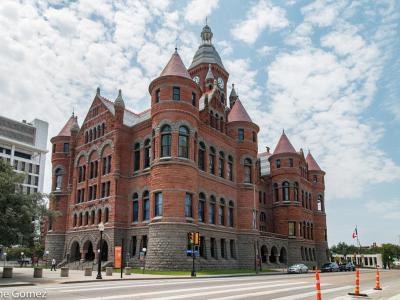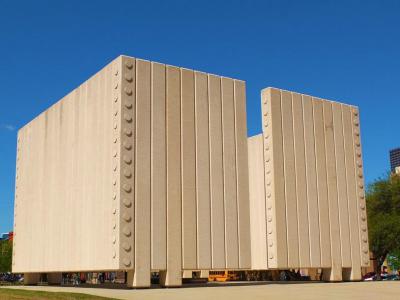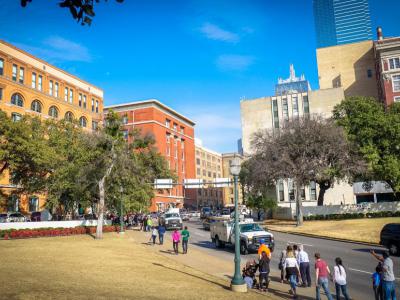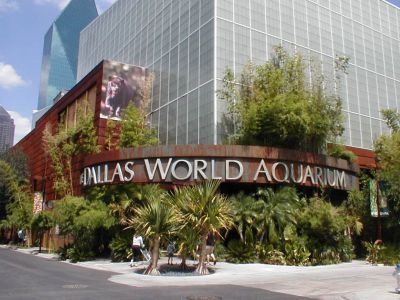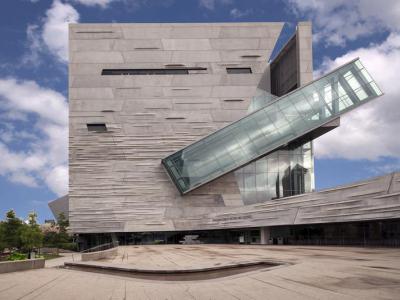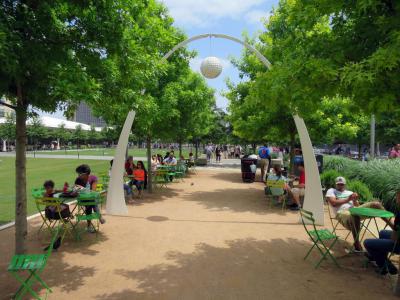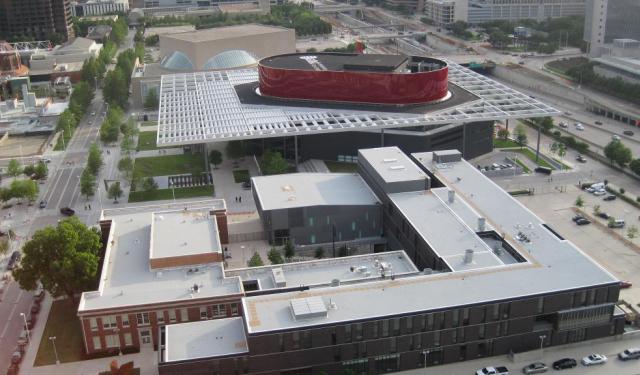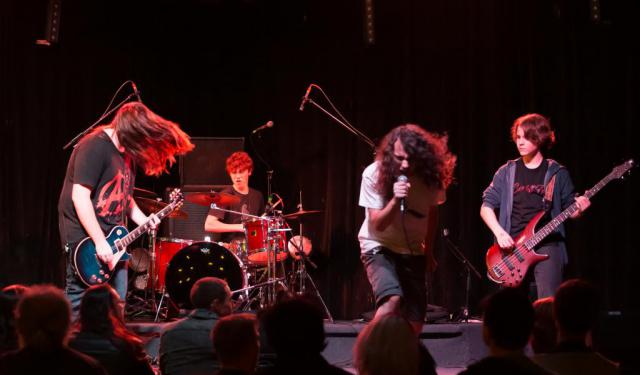Dallas Introduction Walking Tour (Self Guided), Dallas
Dallas, Texas, or simply the "Big D," is America's maverick city. It is bigger, brasher, and glitzier than many other US destinations and is not shy about it.
Situated in the northeastern part of the Lone Star State, Dallas's captivating story began in 1841. The city's name is believed to honor George Mifflin Dallas, the US Vice President who served under James Knox Polk, the 11th president of the United States.
With the construction of railroads, Dallas evolved into a prominent commercial hub, experiencing substantial growth by the close of the 19th century. This transformation saw Dallas become an industrial city, attracting workers from Texas, the South, and the Midwest. In a mere five generations, what used to be a small group of primitive cabins on a muddy riverbank became a huge, sprawling metroplex of skyscrapers and modern offices that rise out of the prairie like a mirage, visible for miles.
One of the most iconic features of Dallas is the Pioneer Plaza and its mesmerizing Cattle Drive sculpture showcasing life-sized bronze statues of cattle and cowboys, providing a sense of the Old West that once defined this region.
The skyline of Dallas is punctuated by the distinctive Reunion Tower, an iconic landmark that offers breathtaking panoramic views of the city. Not far from this towering structure stands the Old Red Courthouse, a historic red sandstone building that now houses a museum.
Dallas is also known for its connection to one of the most tragic events in American history, the assassination of President Kennedy. The John F Kennedy Memorial and Dealey Plaza, where the fateful event occurred, serve as solemn reminders of this momentous event. The Sixth Floor Museum, housed in the former Texas School Book Depository, offers a detailed and poignant exploration of the assassination and its aftermath.
For those with an interest in the natural world, the Dallas World Aquarium and the Perot Museum of Nature and Science are must-visit destinations. Also, to unwind and enjoy the outdoors, Klyde Warren Park offers a sprawling urban oasis in the heart of the city.
Dallas, Texas, cordially invites visitors to explore its history and diverse attractions. If you're intrigued by the city's Wild West heritage, stunning skyline, or cultural offerings, you will find it all and adventure quite a bit on this self-guided walking tour. So, come and discover the charm of the "Big D" for yourself and create unforgettable memories in this dynamic metropolis!
Situated in the northeastern part of the Lone Star State, Dallas's captivating story began in 1841. The city's name is believed to honor George Mifflin Dallas, the US Vice President who served under James Knox Polk, the 11th president of the United States.
With the construction of railroads, Dallas evolved into a prominent commercial hub, experiencing substantial growth by the close of the 19th century. This transformation saw Dallas become an industrial city, attracting workers from Texas, the South, and the Midwest. In a mere five generations, what used to be a small group of primitive cabins on a muddy riverbank became a huge, sprawling metroplex of skyscrapers and modern offices that rise out of the prairie like a mirage, visible for miles.
One of the most iconic features of Dallas is the Pioneer Plaza and its mesmerizing Cattle Drive sculpture showcasing life-sized bronze statues of cattle and cowboys, providing a sense of the Old West that once defined this region.
The skyline of Dallas is punctuated by the distinctive Reunion Tower, an iconic landmark that offers breathtaking panoramic views of the city. Not far from this towering structure stands the Old Red Courthouse, a historic red sandstone building that now houses a museum.
Dallas is also known for its connection to one of the most tragic events in American history, the assassination of President Kennedy. The John F Kennedy Memorial and Dealey Plaza, where the fateful event occurred, serve as solemn reminders of this momentous event. The Sixth Floor Museum, housed in the former Texas School Book Depository, offers a detailed and poignant exploration of the assassination and its aftermath.
For those with an interest in the natural world, the Dallas World Aquarium and the Perot Museum of Nature and Science are must-visit destinations. Also, to unwind and enjoy the outdoors, Klyde Warren Park offers a sprawling urban oasis in the heart of the city.
Dallas, Texas, cordially invites visitors to explore its history and diverse attractions. If you're intrigued by the city's Wild West heritage, stunning skyline, or cultural offerings, you will find it all and adventure quite a bit on this self-guided walking tour. So, come and discover the charm of the "Big D" for yourself and create unforgettable memories in this dynamic metropolis!
How it works: Download the app "GPSmyCity: Walks in 1K+ Cities" from Apple App Store or Google Play Store to your mobile phone or tablet. The app turns your mobile device into a personal tour guide and its built-in GPS navigation functions guide you from one tour stop to next. The app works offline, so no data plan is needed when traveling abroad.
Dallas Introduction Walking Tour Map
Guide Name: Dallas Introduction Walking Tour
Guide Location: USA » Dallas (See other walking tours in Dallas)
Guide Type: Self-guided Walking Tour (Sightseeing)
# of Attractions: 8
Tour Duration: 2 Hour(s)
Travel Distance: 3.6 Km or 2.2 Miles
Author: DanaOffice
Sight(s) Featured in This Guide:
Guide Location: USA » Dallas (See other walking tours in Dallas)
Guide Type: Self-guided Walking Tour (Sightseeing)
# of Attractions: 8
Tour Duration: 2 Hour(s)
Travel Distance: 3.6 Km or 2.2 Miles
Author: DanaOffice
Sight(s) Featured in This Guide:
- Pioneer Plaza / Cattle Drive
- Reunion Tower
- Old Red Courthouse
- John F. Kennedy Memorial
- Dealey Plaza / Sixth Floor Museum
- Dallas World Aquarium
- Perot Museum of Nature and Science
- Klyde Warren Park
1) Pioneer Plaza / Cattle Drive (must see)
Pioneer Plaza is a 4.2-acre open space – the largest in the central Dallas business district – where a natural setting of native Texan plants, with a flowing stream and waterfall, all combine to memorialize the hundreds of cattle drives that took place at this old junction once known as the Shawnee Cattle Trail. The photo-ops are numerous, and you can wander in through the herd to see how much attention to detail was put into each individual longhorn, from facial expression down to hooves. Created by Robert Summers of Glen Rose, Texas, this is the largest bronze monument of its kind in the world.
The plaza and its accompanying cattle drive were the idea of real estate developer Trammell Crow, who wanted an iconic "Western" sculpture in the city of Dallas and assembled a group to donate the works. The first bronze longhorn was unveiled September 21, 1993, along with the trail boss and his horse; the entire project was completed in 1994. With the striking Dallas skyline as its background, this has become an iconic new landmark in downtown Dallas, and is free to visit.
Tip:
The adjacent Pioneer Cemetery is interesting to walk through, surrounded by tombstones that date back some 150 years.
The plaza and its accompanying cattle drive were the idea of real estate developer Trammell Crow, who wanted an iconic "Western" sculpture in the city of Dallas and assembled a group to donate the works. The first bronze longhorn was unveiled September 21, 1993, along with the trail boss and his horse; the entire project was completed in 1994. With the striking Dallas skyline as its background, this has become an iconic new landmark in downtown Dallas, and is free to visit.
Tip:
The adjacent Pioneer Cemetery is interesting to walk through, surrounded by tombstones that date back some 150 years.
2) Reunion Tower (must see)
Reunion Tower has been a fixture on the Dallas skyline since 1978. At 561 feet tall, it was one of the tallest structures in Dallas, and it is one of the city's most recognizable features at night. Described by one reporter as a "giant dandelion", the building is surrounded by a superstructure in the shape of a sphere that has over 250 lights placed at all the joints.
Inside the three outside legs that hold up the sphere are elevators that will give visitors a ride to the 50th-floor observatory as well as the restaurant and café that make up the top floors. The ride takes about a minute and the elevators have a windowed front that allows for spectacular city views. The high-end rotating restaurant, called Five Sixty (a nod to the building's height) was opened by Wolfgang Puck in 2009 and the food has a very definite Asian flair.
The Reunion Complex – which consists of Reunion Tower, Reunion Arena, and the Hyatt Regency Hotel – was seen as a tremendous boost to downtown Dallas and civic pride. The long-awaited opening on April 15, 1978, featured a spectacular light show on the tower and a massive fireworks display that brought freeway traffic all over the city to a halt.
Inside the three outside legs that hold up the sphere are elevators that will give visitors a ride to the 50th-floor observatory as well as the restaurant and café that make up the top floors. The ride takes about a minute and the elevators have a windowed front that allows for spectacular city views. The high-end rotating restaurant, called Five Sixty (a nod to the building's height) was opened by Wolfgang Puck in 2009 and the food has a very definite Asian flair.
The Reunion Complex – which consists of Reunion Tower, Reunion Arena, and the Hyatt Regency Hotel – was seen as a tremendous boost to downtown Dallas and civic pride. The long-awaited opening on April 15, 1978, featured a spectacular light show on the tower and a massive fireworks display that brought freeway traffic all over the city to a halt.
3) Old Red Courthouse
No, you haven't walked into the land of Hansel and Gretel, but you are looking at the massive red sandstone building that served as the fifth seat of government in Dallas County. Built in Romanesque Revival style with gigantic rounded arches, this courthouse was completed in 1892, replacing an earlier structure that burned in 1890.
The Old Red Courthouse, as it is known, was constructed of Arkansas gray granite and Pecos red sandstone. The lower portion is made of blue granite that is also used on window trims, providing a pleasing contrast with the red stone.
The actual design is dominated by eight circular turrets. Notice the acroterium (gargoyle-like figures) on the roof. A clock tower, complete with a 4,500-pound bell, originally topped the building but was removed in 1919. The clock tower bell was so large that it had to be cut into three pieces and lowered to the ground. A few Dallas youngsters particularly felt the loss, because they were accustomed to playing in the tower and causing the clock to ring 13 hours at 1:00.
After having undergone several renovations, the building houses a museum on the 2nd floor, which is set up in quadrants, each separated by era, and covers a wide range of issues, including segregation, Jim Crow laws, the successful locomotive story, the wide array of Texas consumer smash products, the cowboy/cowgirl rugged outdoor culture and much more. If you have some free time, you can probably spend an interesting hour or so learning about the culture, history, education, and politics from different periods in the city's history. The iron staircase is a real work of art from 120+ years ago, too!
Why You Should Visit:
Opens a window into the history of Dallas like no other museum does! The architecture is stunning, and the interior layout/design makes it very easy to walk through without missing a thing.
The Old Red Courthouse, as it is known, was constructed of Arkansas gray granite and Pecos red sandstone. The lower portion is made of blue granite that is also used on window trims, providing a pleasing contrast with the red stone.
The actual design is dominated by eight circular turrets. Notice the acroterium (gargoyle-like figures) on the roof. A clock tower, complete with a 4,500-pound bell, originally topped the building but was removed in 1919. The clock tower bell was so large that it had to be cut into three pieces and lowered to the ground. A few Dallas youngsters particularly felt the loss, because they were accustomed to playing in the tower and causing the clock to ring 13 hours at 1:00.
After having undergone several renovations, the building houses a museum on the 2nd floor, which is set up in quadrants, each separated by era, and covers a wide range of issues, including segregation, Jim Crow laws, the successful locomotive story, the wide array of Texas consumer smash products, the cowboy/cowgirl rugged outdoor culture and much more. If you have some free time, you can probably spend an interesting hour or so learning about the culture, history, education, and politics from different periods in the city's history. The iron staircase is a real work of art from 120+ years ago, too!
Why You Should Visit:
Opens a window into the history of Dallas like no other museum does! The architecture is stunning, and the interior layout/design makes it very easy to walk through without missing a thing.
4) John F. Kennedy Memorial
The John F. Kennedy Memorial in Dallas stands as a poignant tribute to the 35th President of the United States, who was tragically assassinated nearby at Dealey Plaza on November 22, 1963. Located just two blocks east of the assassination site, within the Dallas County Historical Plaza, this memorial was dedicated seven years after the event, symbolizing both remembrance and reverence.
Designed by the renowned American architect and friend of the Kennedy family, Philip Johnson, the memorial is a striking example of architectural minimalism and thoughtful commemoration. Its design is notably marked by a cenotaph structure, an "empty tomb" that serves to honor the memory of President Kennedy while symbolizing the eternal freedom of his spirit. This concept is beautifully embodied through the memorial's key feature: a simple, yet profound, black granite slab inscribed with Kennedy's name in gold letters, all enclosed within an open-roofed concrete pavilion.
Johnson's architectural approach to the memorial was to create something "very humble and spartan," aiming to capture the essence of Kennedy's legacy rather than provide a grandiose monument. This intention is reflected in the monument's design, which is both understated and powerful, with several of its concrete columns ingeniously engineered to appear as though they are floating without visible support. This not only adds to the aesthetic appeal of the structure but also to its symbolic representation of Kennedy's spirit and ideals.
The John F. Kennedy Memorial complements the nearby Sixth Floor Museum, located in the very building from which Lee Harvey Oswald is believed to have fired the fatal shot. Together, these sites offer a comprehensive and deeply moving exploration of one of the most significant and sorrowful events in American history, providing visitors with a space for reflection on the life and legacy of John F. Kennedy.
Designed by the renowned American architect and friend of the Kennedy family, Philip Johnson, the memorial is a striking example of architectural minimalism and thoughtful commemoration. Its design is notably marked by a cenotaph structure, an "empty tomb" that serves to honor the memory of President Kennedy while symbolizing the eternal freedom of his spirit. This concept is beautifully embodied through the memorial's key feature: a simple, yet profound, black granite slab inscribed with Kennedy's name in gold letters, all enclosed within an open-roofed concrete pavilion.
Johnson's architectural approach to the memorial was to create something "very humble and spartan," aiming to capture the essence of Kennedy's legacy rather than provide a grandiose monument. This intention is reflected in the monument's design, which is both understated and powerful, with several of its concrete columns ingeniously engineered to appear as though they are floating without visible support. This not only adds to the aesthetic appeal of the structure but also to its symbolic representation of Kennedy's spirit and ideals.
The John F. Kennedy Memorial complements the nearby Sixth Floor Museum, located in the very building from which Lee Harvey Oswald is believed to have fired the fatal shot. Together, these sites offer a comprehensive and deeply moving exploration of one of the most significant and sorrowful events in American history, providing visitors with a space for reflection on the life and legacy of John F. Kennedy.
5) Dealey Plaza / Sixth Floor Museum (must see)
Dealey Plaza and the high bluff referred to as the "grassy knoll" figure prominently in the Kennedy assassination. It is this site on the north side of Elm Street where the famed Abraham Zapruder film of the assassination was taken and where eyewitnesses to the shooting dropped to the ground, believing they were in the line of fire. The area looks much as it did in 1963, and one will usually see a dozen or more visitors milling about, pointing to the actual (X-marked) site of the shooting, taking photos, or discussing theories about the tragic event, which continues to be a source of controversy today.
There is lots of good signage with extensive historical information throughout the plaza, as well as many commemorative plaques, but to really embrace the full experience, consider visiting the Sixth Floor Museum located on the actual sixth floor of the old Texas School Book Depository, where Lee Harvey Oswald fired his fatal shots. Most visitors are fascinated by the tour, which includes a photo maze of the Kennedy family and presidency, as well as continuous videos with never-before-seen footage of JFK's funeral, interviews from witnesses, and evidence used by the Warren Commission on display.
Why You Should Visit:
A visit to this plaza and its museum is truly like going back in time and promises to leave you wondering.
There is lots of good signage with extensive historical information throughout the plaza, as well as many commemorative plaques, but to really embrace the full experience, consider visiting the Sixth Floor Museum located on the actual sixth floor of the old Texas School Book Depository, where Lee Harvey Oswald fired his fatal shots. Most visitors are fascinated by the tour, which includes a photo maze of the Kennedy family and presidency, as well as continuous videos with never-before-seen footage of JFK's funeral, interviews from witnesses, and evidence used by the Warren Commission on display.
Why You Should Visit:
A visit to this plaza and its museum is truly like going back in time and promises to leave you wondering.
6) Dallas World Aquarium (must see)
The use of "aquarium" in the name is a little misleading, as there is much more than fish and creatures of the water to be found here. Starting out on the 3rd floor, in the reproduced rainforest, you'll get to see a large number of birds, sloths, anteaters, monkeys, reptiles and amphibians; there is even a wild cat habitat that changes every few years. Though somewhat labyrinthine, the layout is quite beautiful, with winding paths and overhanging plants allowing for multiple photo opportunities. With no guiding signs to follow, your best bet is to follow the map in the provided brochure.
Going deeper down the path, the aquarium portion of the facility features ten panoramic windows into 85,000 gallons of saltwater exhibits, each designed to take you to a different aquatic locale: Japan, Indonesia, Sri Lanka, British Columbia, the Bahamas, Fiji, Palau, Southern Australia, Lord Howe Island, and the Solomon Islands. An additional 22,000- gallon walk-through aquarium, recently renovated, puts visitors in the middle of reef life native to the Continental Shelf, including an unusually large number of stingrays. At some point, you will eventually come back out to be greeted by flamingos and stand above a shark tank. It's like a winding maze that leads you through all the levels of this vivarium. Enjoy the adventure!
Tip:
There might be fewer people on weekdays or off-season if you want to explore at a more leisurely pace and really get your money's worth. At other times, arrive early to get a jump on the crowds!
Going deeper down the path, the aquarium portion of the facility features ten panoramic windows into 85,000 gallons of saltwater exhibits, each designed to take you to a different aquatic locale: Japan, Indonesia, Sri Lanka, British Columbia, the Bahamas, Fiji, Palau, Southern Australia, Lord Howe Island, and the Solomon Islands. An additional 22,000- gallon walk-through aquarium, recently renovated, puts visitors in the middle of reef life native to the Continental Shelf, including an unusually large number of stingrays. At some point, you will eventually come back out to be greeted by flamingos and stand above a shark tank. It's like a winding maze that leads you through all the levels of this vivarium. Enjoy the adventure!
Tip:
There might be fewer people on weekdays or off-season if you want to explore at a more leisurely pace and really get your money's worth. At other times, arrive early to get a jump on the crowds!
7) Perot Museum of Nature and Science (must see)
The Perot Museum is what one would imagine happening when elementary school textbooks come to life. Everything one sees here is not only interesting, but also educational – and hands on! It's an educational wonder, with no limit to the amount of learning that can take place. While geared towards children, there is still plenty to catch the attention of adults, from the birth of the solar system to modern technological breakthroughs in engineering and energy harvesting.
The architecture alone draws you in to this multi-story learning experience. Designed by 2005 Pritzker Prize Laureate Thom Mayne, the building was conceived as a large cube floating over a landscaped plinth (or base) and is designed to inspire awareness of science through an immersive and interactive environment. In collaboration with Dallas-based landscape architects, the plinth was landscaped with a 1-acre rolling green roof consisting of rock and native drought-resistant grasses that reflects Texas' indigenous landscape and demonstrates a living system that will evolve naturally over time.
By integrating architecture, nature and technology, the building's design demonstrates scientific principles and is used as a teaching tool that provides living examples of engineering, sustainability and technology at work. It also integrates a variety of sustainable strategies including a rainwater collection system that captures run-off water from the roof and parking lot, satisfying 74% of the museum's non-potable water needs and 100% of its irrigation needs.
The architecture alone draws you in to this multi-story learning experience. Designed by 2005 Pritzker Prize Laureate Thom Mayne, the building was conceived as a large cube floating over a landscaped plinth (or base) and is designed to inspire awareness of science through an immersive and interactive environment. In collaboration with Dallas-based landscape architects, the plinth was landscaped with a 1-acre rolling green roof consisting of rock and native drought-resistant grasses that reflects Texas' indigenous landscape and demonstrates a living system that will evolve naturally over time.
By integrating architecture, nature and technology, the building's design demonstrates scientific principles and is used as a teaching tool that provides living examples of engineering, sustainability and technology at work. It also integrates a variety of sustainable strategies including a rainwater collection system that captures run-off water from the roof and parking lot, satisfying 74% of the museum's non-potable water needs and 100% of its irrigation needs.
8) Klyde Warren Park (must see)
Klyde Warren Park, nestled in the heart of Downtown Dallas, is a 5.2-acre (2.1 hectares) urban oasis built above the Woodall Rodgers Freeway. This public park, which opened its gates in 2012, stands as a testament to community development and urban renewal. Named in honor of Klyde Warren, the young son of billionaire Kelcy Warren who generously donated $10 million towards the park's creation, it represents a significant philanthropic contribution to the city's landscape.
Klyde Warren Park is a prime example of a public-private partnership that enhances urban life. It bridges the vibrant Uptown neighborhood with the Dallas Arts District and the Downtown area, seamlessly integrating the city's cultural and social scenes. This strategic location over a section of the below-grade Woodall Rodgers Freeway, spanning three blocks between Pearl Street and Saint Paul Street, not only serves as a unique architectural feature but also connects various parts of the city, making it a central hub for residents and visitors alike.
The park's design, crafted by the renowned landscape architecture firm The Office of James Burnett, incorporates a blend of active and passive spaces to cater to a diverse range of activities and interests. From children's parks and reading nooks to fountains, game areas, and dog parks, the space is designed to encourage community interaction and outdoor enjoyment. Central to the park is a 6,000-square-foot (560 square meters) restaurant and performance stage, conceived by Thomas Phifer and Partners, which hosts a variety of events and acts as a focal point for gatherings.
Beyond its architectural and design elements, Klyde Warren Park offers an array of amenities and activities. Walking trails adorned with lush greenery provide peaceful escapes, while separate game areas for children and adults, food trucks offering a wide range of culinary delights, and special events contribute to the park's lively atmosphere. The availability of free WiFi and an outdoor library stocked with magazines, books, and newspapers adds to the convenience and enjoyment of visitors.
Why You Should Visit:
Perfect both as an active and social gathering place or simply as one to have a picnic on a beautiful day.
Tip:
Those wanting to add to the adventure may consider taking the FREE McKinney Ave trolley – the city's "secret" transport gem stopping at both ends of the park on its trip through the Arts District and Uptown.
Klyde Warren Park is a prime example of a public-private partnership that enhances urban life. It bridges the vibrant Uptown neighborhood with the Dallas Arts District and the Downtown area, seamlessly integrating the city's cultural and social scenes. This strategic location over a section of the below-grade Woodall Rodgers Freeway, spanning three blocks between Pearl Street and Saint Paul Street, not only serves as a unique architectural feature but also connects various parts of the city, making it a central hub for residents and visitors alike.
The park's design, crafted by the renowned landscape architecture firm The Office of James Burnett, incorporates a blend of active and passive spaces to cater to a diverse range of activities and interests. From children's parks and reading nooks to fountains, game areas, and dog parks, the space is designed to encourage community interaction and outdoor enjoyment. Central to the park is a 6,000-square-foot (560 square meters) restaurant and performance stage, conceived by Thomas Phifer and Partners, which hosts a variety of events and acts as a focal point for gatherings.
Beyond its architectural and design elements, Klyde Warren Park offers an array of amenities and activities. Walking trails adorned with lush greenery provide peaceful escapes, while separate game areas for children and adults, food trucks offering a wide range of culinary delights, and special events contribute to the park's lively atmosphere. The availability of free WiFi and an outdoor library stocked with magazines, books, and newspapers adds to the convenience and enjoyment of visitors.
Why You Should Visit:
Perfect both as an active and social gathering place or simply as one to have a picnic on a beautiful day.
Tip:
Those wanting to add to the adventure may consider taking the FREE McKinney Ave trolley – the city's "secret" transport gem stopping at both ends of the park on its trip through the Arts District and Uptown.
Walking Tours in Dallas, Texas
Create Your Own Walk in Dallas
Creating your own self-guided walk in Dallas is easy and fun. Choose the city attractions that you want to see and a walk route map will be created just for you. You can even set your hotel as the start point of the walk.
Deep Ellum Murals and Food
A unique district in Dallas, Deep Ellum is the place where art and culinary collide – people come to hear their favorite bands and have their taste buds tempted. The vibrant neighborhood is also home to 40+ murals created as a part of the project celebrating Deep Ellum's bold, eclectic history while also providing exposure for artists of all ages and backgrounds.
One of the standout... view more
Tour Duration: 1 Hour(s)
Travel Distance: 1.3 Km or 0.8 Miles
One of the standout... view more
Tour Duration: 1 Hour(s)
Travel Distance: 1.3 Km or 0.8 Miles
Top Religious Sites Walking Tour
Dallas, one of the biggest cities in Texas, is rich in religious congregations. Methodist, Baptist, and Presbyterian communities are prominent in many neighborhoods, anchoring two of the city's major private universities: Southern Methodist University and Dallas Baptist University.
The Catholics also have a strong presence in Dallas, with the Arts District's Cathedral Shrine of the... view more
Tour Duration: 1 Hour(s)
Travel Distance: 2.1 Km or 1.3 Miles
The Catholics also have a strong presence in Dallas, with the Arts District's Cathedral Shrine of the... view more
Tour Duration: 1 Hour(s)
Travel Distance: 2.1 Km or 1.3 Miles
Arts District Walk
The Dallas Arts District spans twenty square blocks filled with art museums, performance halls, public parks, educational facilities, homes and businesses, as well as historic churches. Five of the local buildings were designed by architects who won the highest honor in their field - the Pritzker Prize. Aesthetically pleasing, the Arts District of Dallas is a street photographer's paradise.... view more
Tour Duration: 1 Hour(s)
Travel Distance: 0.5 Km or 0.3 Miles
Tour Duration: 1 Hour(s)
Travel Distance: 0.5 Km or 0.3 Miles
Live Music in Deep Ellum
An eclectic and progressive neighborhood, Deep Ellum is home to the fashion-forward, trend-setting lot. The latter is particularly true when it comes to music, as the area has seen the birth of many new bands in recent years. Here you will find an array of terrific live music venues rubbing shoulders with some colorful small shops and coffeehouses. The district also stands out with its interesting... view more
Tour Duration: 1 Hour(s)
Travel Distance: 1.4 Km or 0.9 Miles
Tour Duration: 1 Hour(s)
Travel Distance: 1.4 Km or 0.9 Miles
The Most Popular Cities
/ view all
